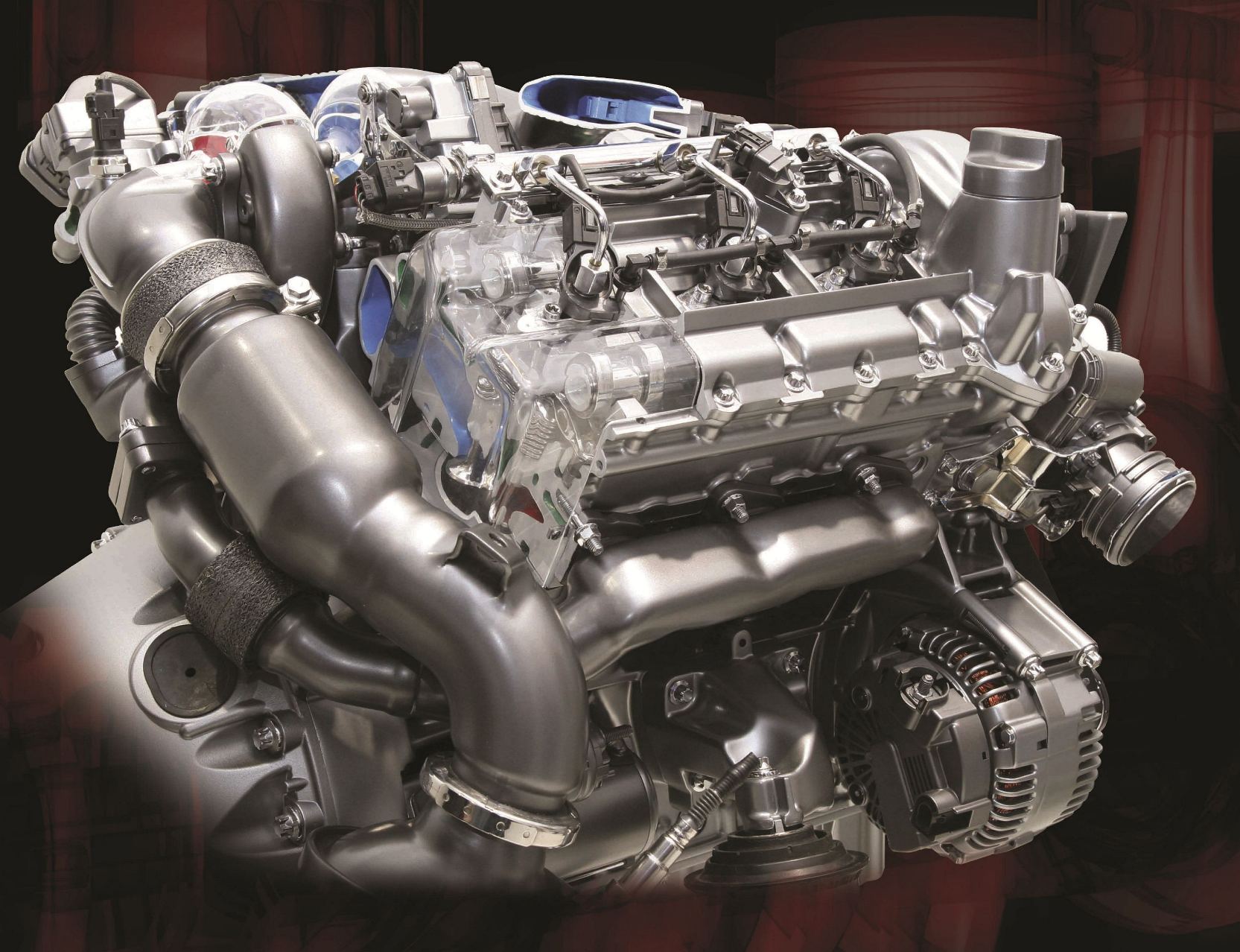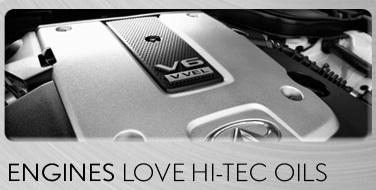Oils ain't Oils
Modern engine oils face a tough job, but auto technicians face an ever tougher job when deciding which engine oil to pick from the vast array on offer.
By Jenny Baker
Engine oil must address the anti-wear, oxidation, and performance needs of today’s sophisticated vehicle engines, and protect their emission control systems.
Technicians must field a multitude of adjectives that describe the oil’s characteristics.They must understand the standards that govern and describe petrol and diesel passenger car motor oil. When they recommend an oil drain interval, they often have to compromise between auto makers’ prescriptions, auto owners’ demands, and common sense.
How to choose? The best advice is auto technicians must ensure they understand the role and composition of engine oil and the variables that impact on the choice of oil. It helps to get a vehicle’s history when making choices. It pays to ask sales engineers from more than one manufacturer questions to understand the issues involved.
A sales engineer will present their product in the best possible light.However, established oil manufacturers will do nothing to harm their reputation and it can be taken as read their products will add value and do the job over the threshold value.
Here are some refresher pointers to keep in mind when choosing engine oil for passenger and light commercial vehicles.
What engines need from oils
Engine oil protects the engine against corrosion and wear.It seals the combustion chamber by forming a film between the rings and cylinder wall and between the valve and valve seats.It cleans by keeping contaminants in the system in suspension and preventing deposits from forming on engine surfaces.It lubricates the engine and reduces friction between moving parts.It cools the engine by absorbing heat from the engine as it circulates.
However, significant changes in engine design the past 15 years have placed increased demands on engine oils.The mechanical efficiency and power output of most engines have increased markedly.Luxuries such as power steering, air conditioning, and automatic transmissions are now fitted as standard to most vehicles. All these use mechanical power from the engine and contribute to the heat load generated under the bonnet.
In addition, developments such as lower profile tyres; engine bay firewall insulation; smaller grilles; and lower skirts at the front, side, and rear means that the under bonnet temperatures of today’s cars have increased by around 20˚C or more.
What oils offer
The increased heat loading on engines demands better oxidation resistance and stability from engine oil for today’s cars than for typical cars of the 1970s and 1980s.Oxidation resistance and stability are critical to keep an engine working.
Oxidised oil results in corrosive acids in the oil that can dissolve soft bearing materials; engine sludge that will eventually block oilways and decrease engine efficiency; an increase in fuel consumption and harmful emissions; and increased wear due to restricted oilways and thickened oil, which could result in numerous mechanical problems such as sticking rings or valve lifters and possible engine failure.
Engine oil is a combination of base oils and various additives. An oil’s base and the composition of additive packages make a difference to the characteristics of the lubricant.
Base oils can be mineral, synthetic, or a mixture of the two. According to proponents of synthetic based oil, synthetic and part synthetic oils produce a lower friction lubricant film that thins out less than that of mineral based oils when temperatures increase.
They say synthetic and part synthetic oils can operate at significantly higher temperatures than mineral oils before they begin to break down, and are much more resistant to oxidative breakdown than mineral oils.And when synthetic oil does break down, it degrades at a much slower rate and with less sludge than mineral based oil.
Manufacturers say this allows high quality lower viscosity oils to be made with part or full synthetic base oils, which results in quicker oil circulation at start up, compared with mineral oils. Since reportedly more than 80% of the total engine wear occurs at start up, quicker oil circulation at start up will result in decreased wear and longer engine life.
Synthetic and semi-synthetic based oils’ drawback is they are much more expensive than mineral oil based products.
A spokesperson for a lubricant manufacturer says, like everything else, consumers get what they pay for: “If you don’t put the correct oil in your car, no matter whether it be synthetic or mineral, you’ll most certainly encounter problems that could cost more than a few litres of synthetic oil.”
Proponents of mineral oils say while it is true mineral oils may have contained contaminants in the past despite sophisticated refining and additive technology, the so-called Group 2 ultra refined mineral oils have proved themselves in field applications.
These oils offer good performance at lower cost than synthetic or part synthetic based oils, especially in New Zealand driving conditions but, according to an oil manufacturer, are best suited for older vehicle technology engines manufactured prior to 1990.
Additives fall into two categories - those that function by changing improving a property of the oil itself, and those that function by chemical interactions with the engine.
There are nine types of additives. They are oxidation inhibitors; dispersants and detergents; antiwear and extreme pressure additives; friction modifiers; rust and corrosion inhibitors; pour point depressants; metal deactivators; anti foamants; and viscosity index improvers.
Which is which?
Motor oils are classified by three major organizations, the SAE (Society of Automotive Engineers), the API (American Petroleum Institute), and the ILSAC (International Lubricant Standardization and Approval Committee).These classifications are designed to help consumers choose the right motor oil.
The SAE defines motor oil viscosity grades, or the oil’s thickness or resistance to flow, by a numbering system.A lower viscosity number means thinner oil that flows more easily than oil with a higher viscosity number.
The API and ILSAC establish standards for passenger car motor oil by attempting to balance the needs and views of a number of groups, including global automobile manufacturers, oil companies, chemical additive companies, and testing laboratories. These standards involve meeting performance testing, bench testing, and more recently limits on certain chemical elements present in engine oil.
The goal is to produce the best practical specification that meets the current vehicle appetite.They also try to protect the performance requirements demanded by previous specifications created by these organizations.This is often referred to as backward compatibility or the ability of a new oil with a current standard to be suitable for use in older vehicles.
ILSAC defines motor oils that meet both the most current API S service category and Energy Conserving requirements as defined by the American Society for Testing and Materials Sequence VI fuel economy test. The current specification, released in 2004, is API SM/ILSAC GF-4.As fuel economy is directly related to oil viscosity, only lighter viscosity oils meet this specification.
For decades the service grade trend increased performance standards through an increase in the evaluation test severity or by requiring additional performance testing.Improvements to engine oils to meet these standards were typically achieved by increased additive concentrations or by employing new types of additive technology.
The joker in the pack
Along came global warming and a world-wide upsurge in respiratory ailments, with fingers pointing to fossil fuel burning vehicle exhaust emissions as one of the major culprits.In the mid 1980s car makers began to fit cars with systems to limit noxious gases and particulate matter coming out of their exhaust pipes.
ILSAC GF-3, released in 2001, marked a significant change in specification philosophy when oil makers agreed to limit phosphorous content of current engine oils to help modern exhaust catalysts perform effectively for longer.The API SM/ILSAC GF-4 specifications also limit sulphur content. SAPS – or sulphated ash, phosphorous and sulphur - when burned and exhausted though normal engine operation, are said to foul the catalyst surface and hinder its ability to reduce exhaust emissions.
To reduce the SAPS content of motor oils oil makers must reduce the use of zinc dialkyl dithio phosphate (ZDDP) and not replace it with other ash containing compounds.However, ZDDP confers both anti-wear and anti-oxidant properties to engine oil.This reduction in zinc generates two issues in the market.
The first, for newer cars, is about trying to maintain both engine and catalyst life.The second, for older vehicles, is these older vehicles may require anti-wear properties that may not be met fully by oil that complies with the most current standards.Though most experts in the field believe that modern API SM/GF-4 engine oils are fully backward compatible, there are anecdotal reports of problems in some older vehicles, specifically centering on camshaft wear.
Future upgrades in API S/ILSAC GF specifications are expected to continue the trends of improving deposit control, lowering volatility, lowering emissions, and improving fuel economy.
A lube is a must
Even the best quality engine oil must be changed from time to time and the engine flushed of scaling and deposits.This is because oil becomes contaminated with use, which depletes oil additives.The reason for this contamination is even the highest quality motor oils cannot provide a complete seal between the piston rings and cylinder wall.
Consequently, some exhaust gas can enter the crankcase.This contaminates the crankcase with soot, water, and acids, which have adverse effects on engine oil.
Mainly, the oil thickens and circulates more slowly, causing the engine to run hotter.The oil film on hot metal parts becomes thicker, which could leave hard deposits.The extra heat and chemical interactions between the oil and various combustion by-products accelerate oxidation.Acid contaminants in oil can potentially cause corrosive engine wear and additive dropout, which causes the build-up of sludge and sediment in the oil pan and elsewhere in the engine.
These effects are compounded by the fact that engine manufacturers are extending oil drain intervals.But technicians often have to do extra calculations to determine an appropriate interval.Reputable engine oil makers formulate their oil to standards; but differences in specific consumers driving habits, operating environment, engine design, and maintenance practices may fall outside the expectation of these performance standards.
Auto technicians must remember this and ensure they take the necessary steps to fully protect their customers’ vehicles.An important factor in determining an appropriate interval is the vehicle’s operating conditions.Oil makers define these conditions as normal or severe.
The definition of severe conditions generally includes one or a combination of stop-start traffic driving; the majority of trips being shorter than 15km; towing or heavy load operation; and operation in dusty, wet, hot, or cold conditions.Severe driving conditions cause a large amount of combustion by-products to enter the oil, causing the oil to degrade quicker than in normal conditions.Regularly driving under severe conditions could cut the recommended interval by as much as half.
Makers of synthetic base engine oils say major advantages of these oils are they can be used safely for severe operations without compromising engine protection, durability, performance, and ultimately repair life.And they can be used safely for the full drain interval as specified by the engine manufacturer.
Price remains a good yardstick when choosing engine oil for the average car owner whose car does an average job.
Experienced technicians develop a feel for what works in their environment and for their customer base, and it will serve their practice well to ensure they teach this knowledge to new employees.
To check to see what oil your vehicle manufacturer recommends click the link below





